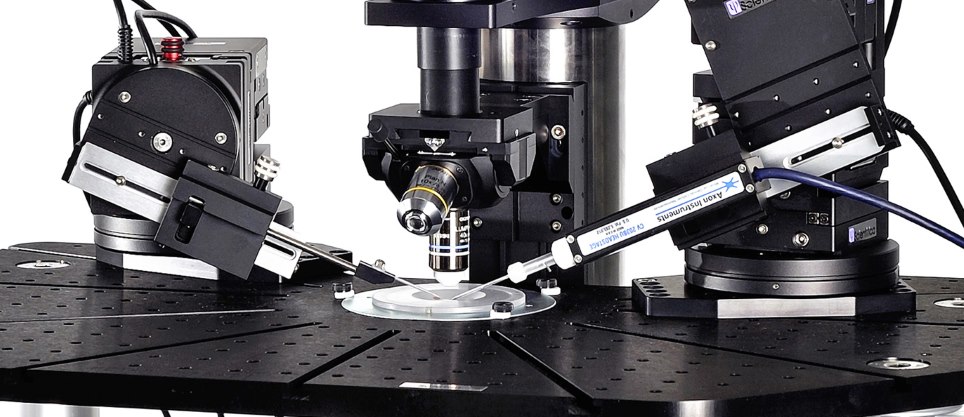
Gene responsible for Kleefstra syndrome mediates synaptic scaling
Researchers from the Donders Institute at Radboud University in the Netherlands have recently shown how a gene called Euchromatic Histone Methyltransferase 1 (EHMT1), regulates the bandwidth at which neurons exchange information.
The inability to stay within these bands can lead to the intellectual disability known as Kleefstra syndrome
What is Kleefstra syndrome?
Kleefstra syndrome, previously known as 9q34.3 deletion syndrome, is a rare genetic disorder characterised by delayed development, intellectual disability and severely delayed or absent speech.
In 2006, Tjitske Kleefstra and Hans van Bokhoven from the Radboud University Nijmegen Medical Centre discovered that a deletion (or mutation) near the end of chromosome 9 affects a gene called Euchromatic Histone Methyltransferase 1 (EHMT1), causing a distinct form of mental handicap that later became known as Kleefstra syndrome. At the time the researchers were unable to identify how the gene contributed to the disease, but they did show that EHMT1 seemed to direct other genes involved in the process of learning.
A recent paper, published in the journal Neuron, has begun to elucidate how EHMT1 leads to learning and intellectual disability.
Homeostatic plasticity
Learning, on a molecular level, is the change in strength between neurons at synapses. The more information is shared between neurons the stronger the connection becomes. To stop this feed-forward process from going too far, the brain keeps the connections between neurons within a particular bandwidth. This delicate balance is required for learning and memory formation.
Homeostatic plasticity is a method that enables neurons to stay within the necessary bandwidth. It is a form of synaptic plasticity that allows neurons to regulate their overall excitability in comparison to the network. It helps to maintain a fine balance between overall excitation and inhibition. One method used to accomplish this is a process known as synaptic scaling.
Synaptic scaling
Synaptic scaling assists individual neurons with the regulation of their overall action potential firing rate. It works in unison with other homeostatic plasticity mechanisms to normalise all the synaptic connections. It promotes downscaling of overly strong connections and upscaling of weak activity to fit within the set bandwidth of the neural network.
Assistant Professor Nael Nadif Kasri, the principal investigator of the study, said: “It turns a silent whisper as well as deafening shouts between neurons into easily understandable communication within the proper bandwidth.”
The role of the EHMT1 gene is to monitor and modulate synaptic upscaling.
The role of EHMT1
EHMT1 is critical to synaptic scaling and responds to attenuated neuronal firing or sensory drive. A chronic loss of activity increases the amount of neuronal dimethylated H3 at lysine 9 (H3K9me2), the catalytic product of EHMT1. H3K9me2 is an epigenetic marker for gene repression.
One example of a gene downregulated by H3K9me2 is Brain-Derived Neurotrophic Factor (BDNF). An increase in EMHT1 leads to repression of the BDNF gene.
Therapeutic possibilities
A disturbance in homeostatic plasticity is responsible for a few conditions characterised by intellectual disability, including fragile X syndrome, Rett syndrome and tuberous sclerosis as well as Kleefstra syndrome.
The paper also reveals that the EHMT1 is sensitive to signals from the environment. Dr Nadif Kasri said: "This means that this processes can perhaps be affected, or even controlled. This might provide new approaches for therapy.”
A treatment for the correction of EHMT1 dysfunction would not necessarily have to target the gene itself; it could also target genes downstream of EHMT1 such as BDNF.
In this study, whole-cell voltage clamp recordings were carried out in 350 µm coronal brain slices on a SliceScope Pro 2000 electrophysiology rig.

An integrated electrophysiology rig ideal for dual or single patch clamp recording with a movable microscope. This system consists of the SliceScope microscope, motorised XY translation stage, fixed-stage platform and two PatchStar micromanipulators.
Get more info on the SliceScope Pro 2000
Paper reference:
Benevento M., Iacono G., Selten M., Ba W., Oudakker A., Frega M., Keller J., Mancini R., Lewerissa E., Kleefstra T., Stunnenberg H. G., Zhou H., van Bokhoven H., Nadif Kasri N. Histone Methylation by the Kleedstra Syndrome Protein EHMT1 Mediates Homeostatic Synaptic Scaling Neuron (2016) doi: 10.1016/j.neuron.2016.06.003

)